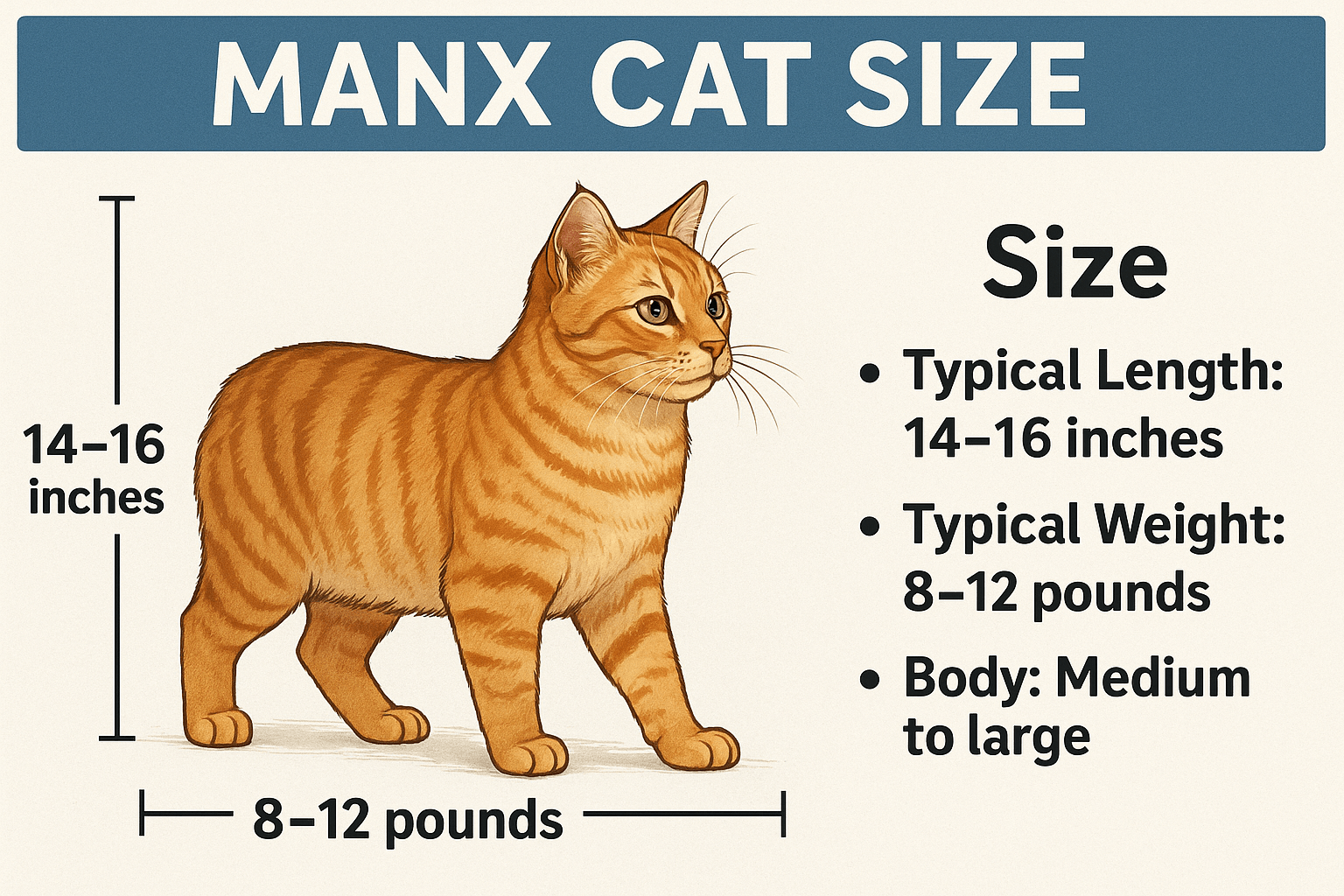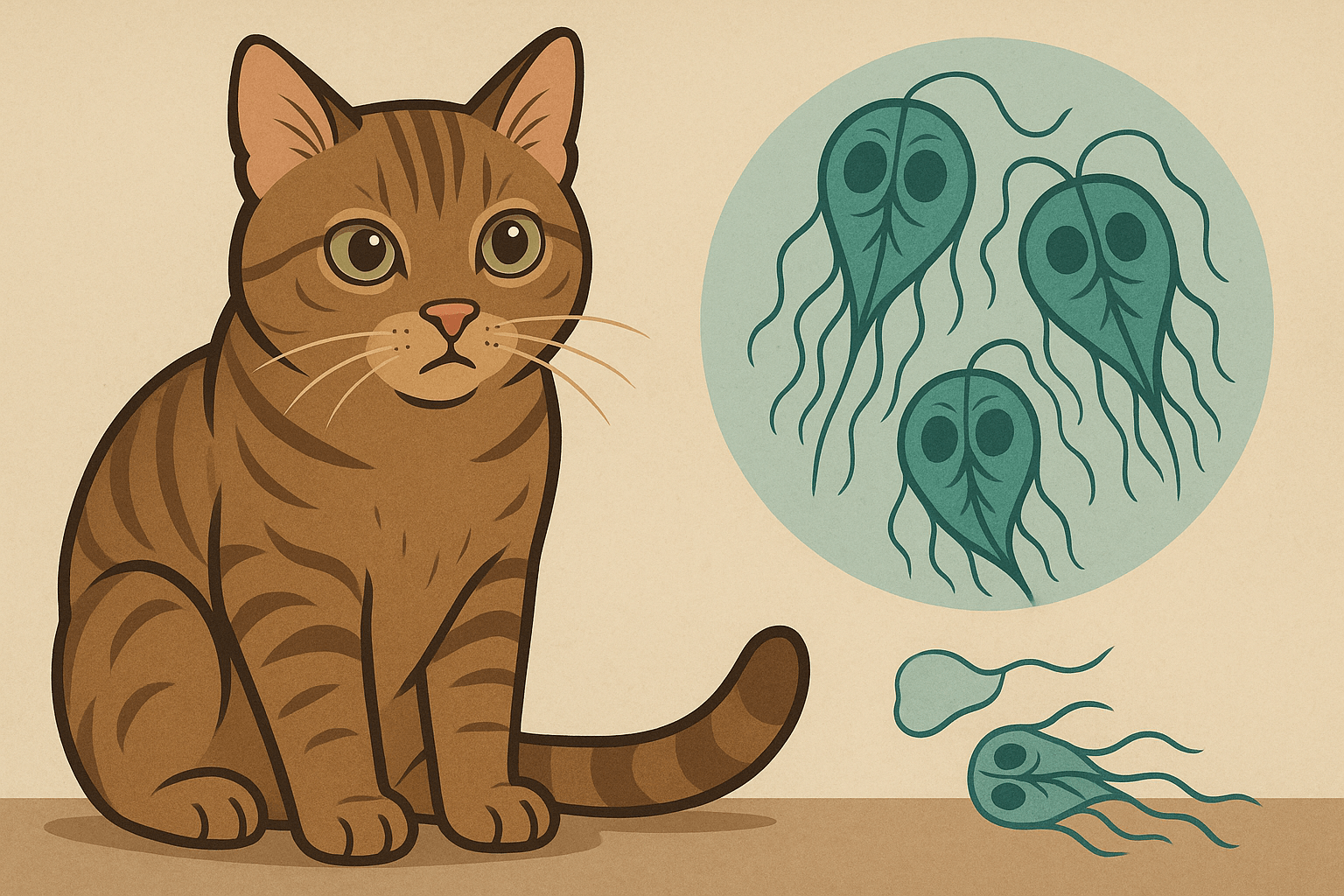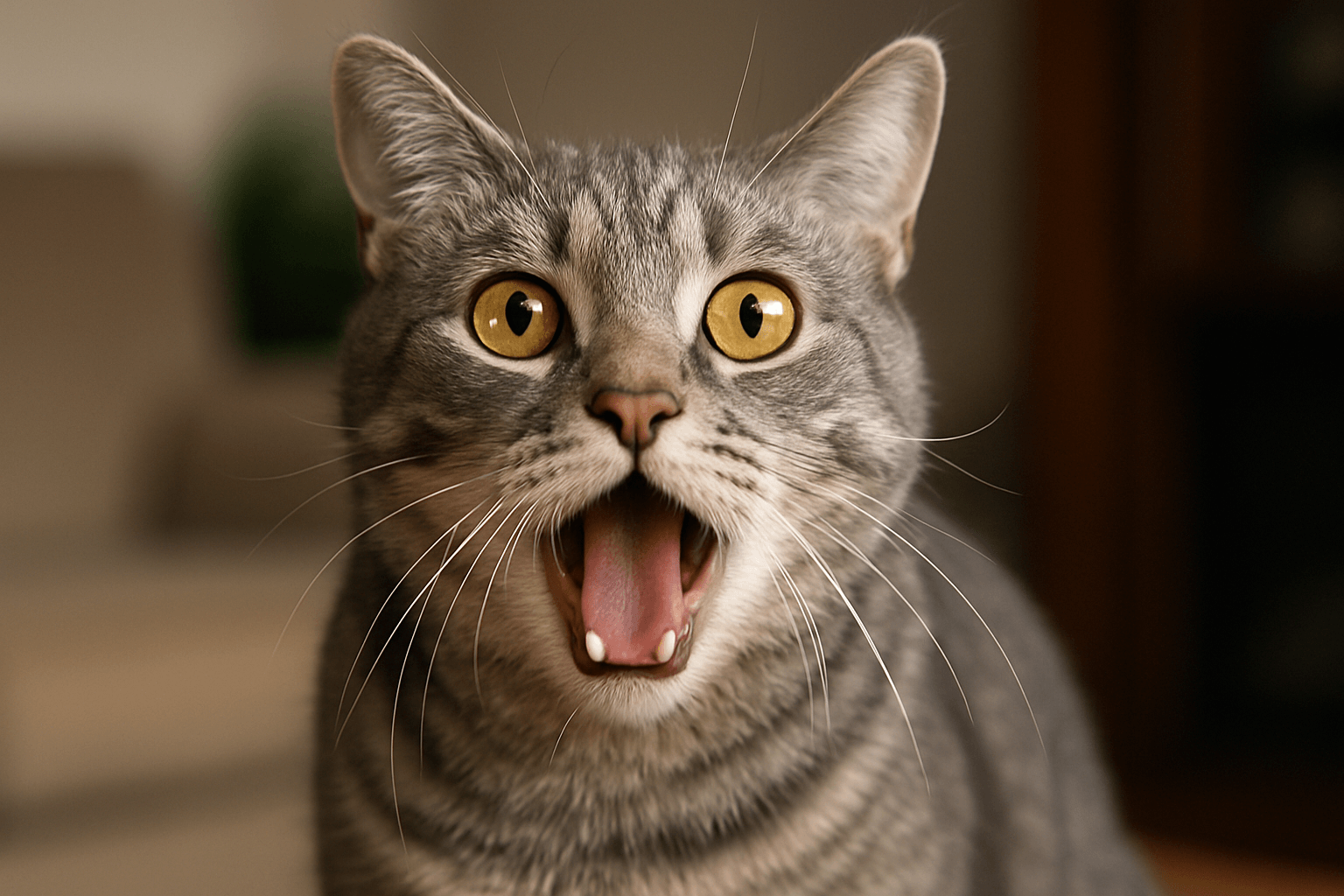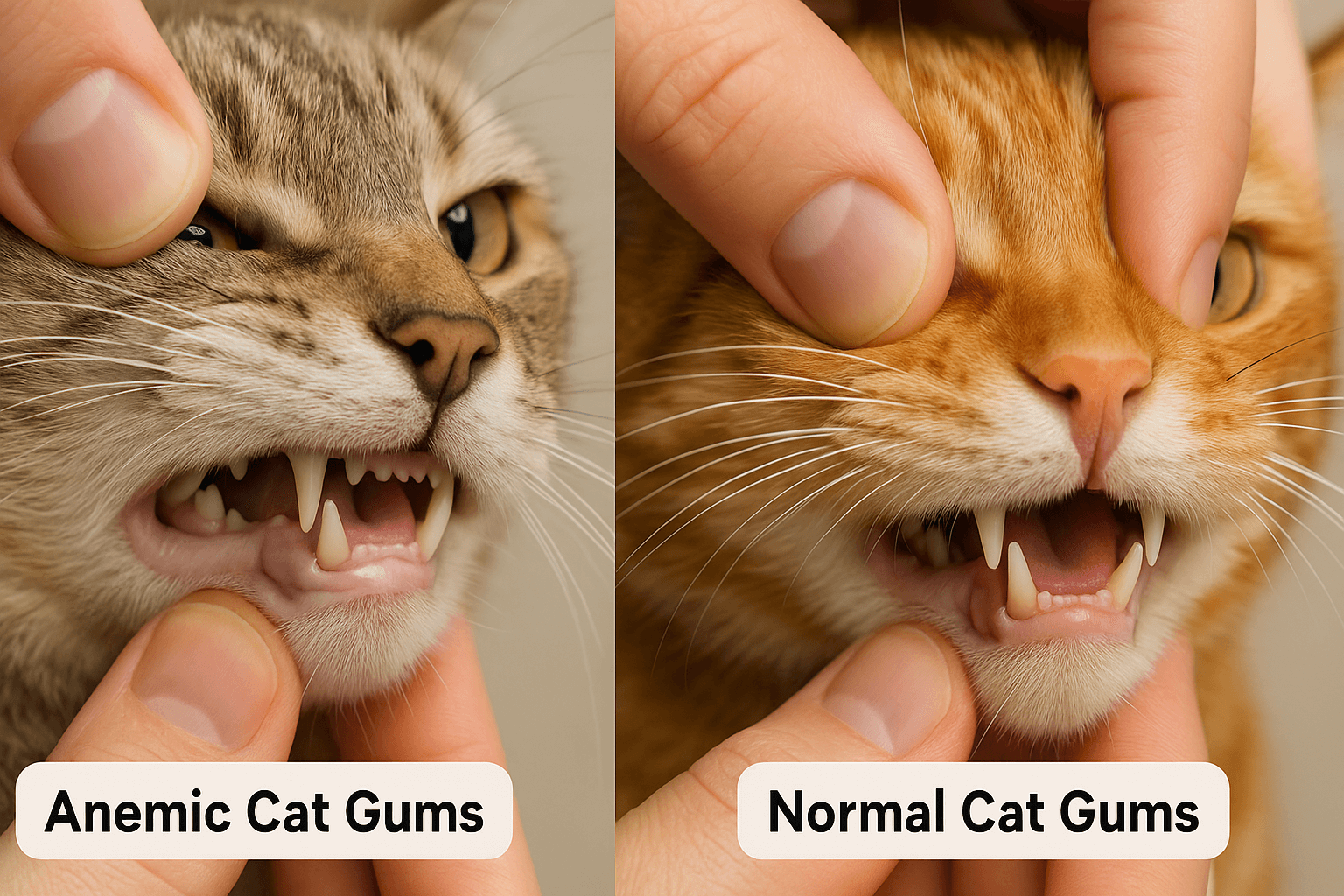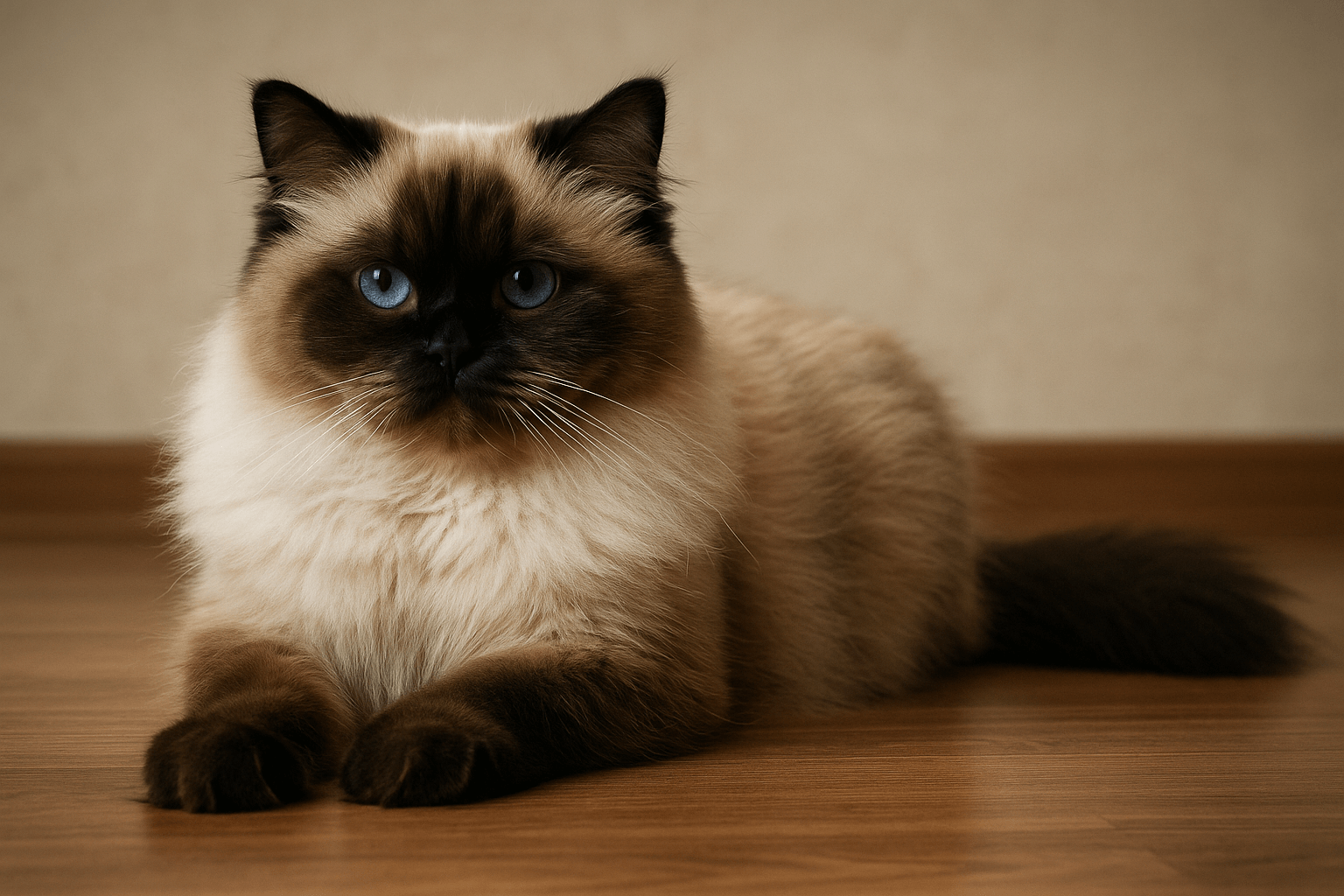Manx Cat Size: Everything You Need to Know
The Manx cat is a unique and fascinating breed, known for its distinctive lack of tail and robust build. While many people are drawn to their charming personalities and playful nature, understanding their size and physical characteristics is essential for potential owners. The Manx cat’s size can vary depending on factors like genetics, diet, and lifestyle, but this breed generally stands out for its compact yet muscular frame. In this blog post, we’ll explore everything about the Manx cat size, from height and weight to growth patterns and care tips, so you can better appreciate what makes this breed truly special.
Understanding the Average Size of a Manx Cat
The Manx cat is a medium-sized breed with a sturdy and well-proportioned body. Their size is one of the key features that sets them apart from other breeds. Here’s a breakdown of what to expect when it comes to their dimensions.
Height:
Adult Manx cats typically stand between 8 to 10 inches tall at the shoulder, making them slightly shorter than some other breeds.Weight Range:
Male Manx cats usually weigh between 10 to 12 pounds, while females tend to be lighter, ranging from 8 to 10 pounds.Body Shape:
Despite their compact size, Manx cats have a stocky, muscular build that gives them a solid and powerful appearance.Tail Variations:
Manx cats come in three tail types—rumpy (no tail), rumpy riser (small stump), and longy (partial tail)—which can slightly affect their overall length.Growth Timeline:
Manx cats reach their full size by around 2 to 3 years of age, which is slightly longer than the average growth period for most domestic cats.
Understanding these details helps paint a clearer picture of what to expect when welcoming a Manx cat into your home.
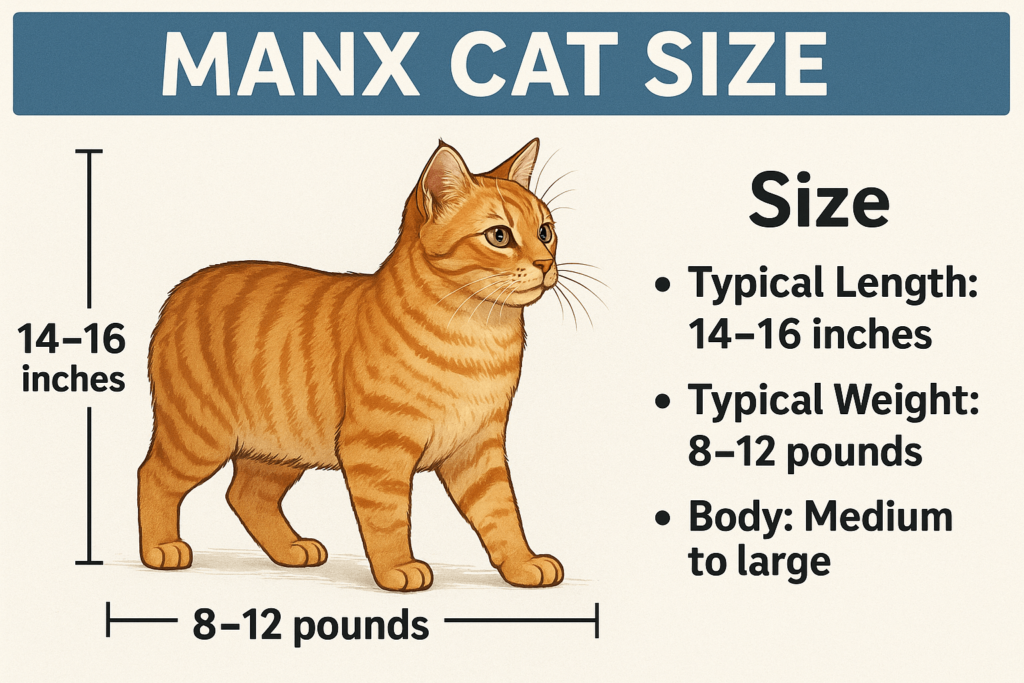
Factors That Influence Manx Cat Size
Several factors can impact the size of a Manx cat, from genetics to environmental influences. Being aware of these elements ensures you provide the best care for your feline companion.
Genetics:
A Manx cat’s size is largely determined by their lineage, so knowing their breeding background can offer insights into their expected growth.Nutrition:
A balanced diet rich in protein and essential nutrients supports healthy growth and development, preventing issues like obesity or underweight conditions.Exercise Levels:
Regular play and activity help maintain muscle tone and prevent excessive weight gain, which can affect their overall size and health.Health Conditions:
Certain medical issues, such as hormonal imbalances or bone disorders, may influence a Manx cat’s growth trajectory. Regular vet check-ups are crucial.Spaying or Neutering:
Altered cats may experience slight changes in metabolism, potentially affecting their weight and size if not monitored closely.
By addressing these factors, you can ensure your Manx cat grows into a healthy and happy adult.
Check this guide 👉Turkish Angora Cat Size: Best 7 Expert Tips!
Check this guide 👉Tuxedo Cat Size: Best 7 Expert Tips!
Check this guide 👉Norwegian Forest Cat Size vs Normal Cat: Best 7 Tips!
Physical Traits of Manx Cats | Care Tips for Maintaining Health |
|---|---|
Compact and muscular build | Provide a high-quality, protein-rich diet |
Tailless or short-tailed varieties | Encourage daily play and exercise routines |
Medium size with sturdy frame | Monitor weight to prevent obesity |
Reaches full size by 2-3 years | Schedule regular veterinary check-ups |
Height ranges from 8-10 inches | Avoid overfeeding to maintain ideal weight |
How to Measure Your Manx Cat’s Size Accurately
Measuring your Manx cat’s size is a simple process that provides valuable information about their growth and health. Follow these steps to get accurate measurements.
Measure Height:
Use a tape measure to determine the distance from the floor to the top of your cat’s shoulders while they’re standing upright.Weigh Your Cat:
Place your cat on a pet scale or weigh yourself holding them, then subtract your weight to calculate theirs accurately.Check Length:
Measure from the base of the neck to the base of the tail for an idea of their body length, excluding the tail variation.Observe Proportions:
Compare their body proportions to breed standards, ensuring they align with typical Manx characteristics like a rounded rump and broad chest.Track Growth Over Time:
Record measurements periodically to monitor steady growth and identify any unusual changes early on.
Accurate measurements help you stay informed about your Manx cat’s development and catch potential health concerns before they escalate.
Tips for Managing Your Manx Cat’s Weight
Maintaining a healthy weight is vital for your Manx cat’s overall well-being. These tips will help you manage their weight effectively and prevent common issues associated with improper sizing.
Feed Portion-Controlled Meals:
Divide their daily food intake into small, measured portions to avoid overeating and maintain consistent energy levels.Choose High-Quality Food:
Opt for premium cat food formulated for active breeds, ensuring it meets their nutritional needs without unnecessary fillers.Limit Treats:
While treats are great for rewards, they should make up no more than 10% of your cat’s daily caloric intake to avoid weight gain.Incorporate Playtime:
Engage your Manx cat in interactive games like chasing toys or climbing structures to burn off excess energy and calories.Monitor Changes in Appetite:
Sudden increases or decreases in appetite could signal underlying health problems, so consult your vet if you notice irregularities.
By following these guidelines, you can keep your Manx cat at a healthy weight and enjoy their playful personality for years to come.
Common Misconceptions About Manx Cat Size
There are several misconceptions about the size of Manx cats that can lead to confusion among potential owners. Clearing up these myths helps set realistic expectations.
Myth: All Manx Cats Are Small:
While they are compact, Manx cats are classified as medium-sized, not small, due to their robust build.Myth: Tailless Cats Are Always Smaller:
The absence of a tail doesn’t inherently reduce a Manx cat’s size; their proportions remain consistent with breed standards.Myth: They Grow Quickly Like Other Breeds:
Unlike many cats, Manx take 2 to 3 years to reach full maturity, requiring patience during their growth phase.Myth: Muscular Build Equals Heaviness:
Despite their strong frames, Manx cats aren’t heavier than other medium-sized breeds unless overfed.Myth: Size Determines Personality:
A Manx cat’s size has no bearing on their friendly and sociable demeanor, which remains consistent regardless of dimensions.
Dispelling these myths ensures a better understanding of what makes Manx cats truly unique.
Comparing Manx Cat Size to Other Breeds
How does the Manx cat’s size compare to other popular cat breeds? This comparison sheds light on their distinct physical characteristics.
Shorter Than Maine Coons:
Maine Coons are one of the largest breeds, towering over the compact Manx in both height and length.Stockier Than Siamese Cats:
Siamese cats are slender and elegant, contrasting sharply with the Manx’s muscular and rounded body shape.Similar to British Shorthairs:
Both breeds share a medium size and sturdy build, though the Manx is slightly shorter and lacks a tail.Smaller Than Norwegian Forest Cats:
Norwegian Forest Cats are larger and fluffier, making the Manx appear more petite in comparison.Comparable to American Shorthairs:
The two breeds share similar weights and proportions, though the Manx’s taillessness sets it apart visually.
This comparison highlights how the Manx fits into the broader spectrum of cat breeds.
Fun Facts About Manx Cat Size
Beyond their practical aspects, there are plenty of fun facts about the Manx cat’s size that showcase their charm and individuality.
Rabbit-Like Hopping Gait:
Due to their powerful hind legs and compact size, Manx cats often hop like rabbits instead of walking traditionally.Tail Variations Add Character:
Each tail type—rumpy, rumpy riser, and longy—gives individual Manx cats a unique silhouette despite their uniform size.Perfect Lap Size:
Their medium size makes them ideal lap cats, offering cozy companionship without overwhelming their owner.Athletic Despite Stature:
Though not the largest breed, Manx cats excel at jumping and climbing thanks to their muscular legs and agile bodies.Historical Farm Companions:
Originally bred for hunting rodents, their size made them nimble yet strong enough to navigate farm environments effectively.
These fun facts celebrate the delightful quirks that make Manx cats a beloved breed worldwide.
Frequently Asked Questions About Manx Cat Size
What is the average weight of a Manx cat?
Male Manx cats typically weigh between 10 to 12 pounds, while females range from 8 to 10 pounds.
When do Manx cats stop growing?
Most Manx cats reach their full size by 2 to 3 years of age, slightly later than many other breeds.
Are Manx cats smaller than other breeds?
Manx cats are medium-sized but appear more compact due to their muscular build and shorter stature.
Does the tail type affect their size?
Tail variations don’t significantly impact overall size, though “rumpies” may seem slightly shorter due to their tailless appearance.
How can I tell if my Manx cat is overweight?
Look for signs like difficulty grooming, excessive belly fat, or reduced mobility, and consult your vet for confirmation.
Celebrating the Unique Size and Charm of Manx Cats
The Manx cat’s size and physique reflect their hardy nature and endearing personality. Whether you’re captivated by their tailless charm or impressed by their muscular frame, understanding their physical traits and growth patterns allows you to provide the best care possible. With proper nutrition, exercise, and regular monitoring, your Manx cat will thrive as a cherished member of your family. Embrace the uniqueness of this remarkable breed and enjoy every moment of companionship they bring into your life.
Giardia in Cats: Best 7 Expert Tips! Discover expert advice on identifying, treating, and preventing giardia in cats to ensure your feline stays happy and healthy.
Cat Hyperventilating: Best 7 Expert Tips! Discover signs, causes, and solutions for cat hyperventilation. Learn how to calm your cat and when to seek veterinary care for their breathing issues.
Anemic Cat Gums vs Normal: Best 7 Expert Tips! Learn to spot signs of anemia in cats, understand gum health, and ensure your feline stays happy and healthy with expert advice.
Himalayan Cat Size: Best 7 Expert Tips! Discover expert advice on Himalayan cat size, growth factors, care tips, and how to ensure your feline stays healthy and happy.

